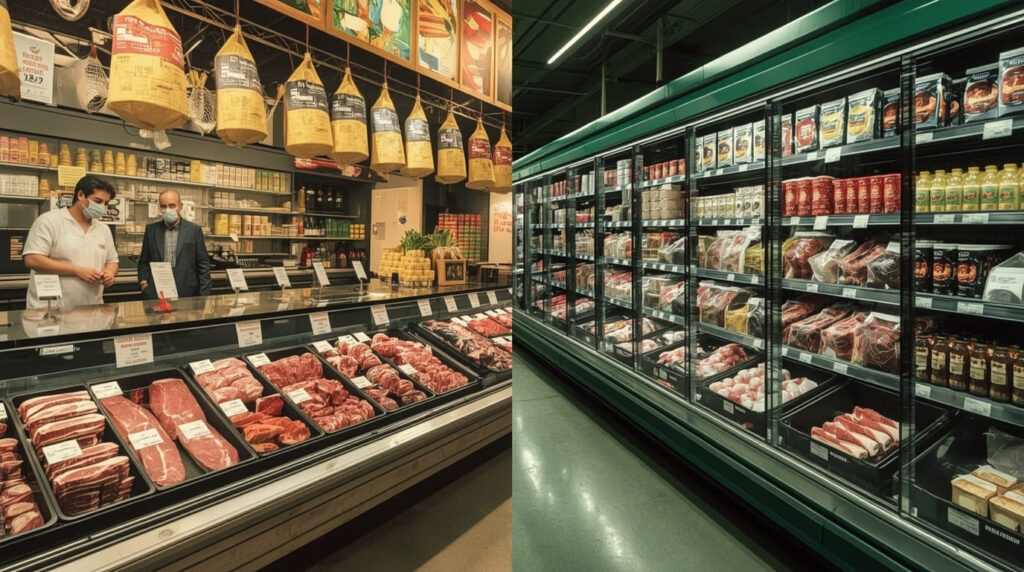The Complete List of Vegetables to Keep Out of the Fridge
Key Takeaways
- Keep potatoes, onions, and garlic in a cool, dark, and dry place.
- The fridge's cold air ruins the texture and taste of these specific vegetables.
- Never store potatoes and onions together; they make each other spoil faster.
- Good air circulation is the secret to preventing mold and sprouting in storage.

Why the Fridge Is a Trap for Certain Vegetables
Some veggies suffer real damage in the fridge. There are two reasons: the cold and the moisture.
The Cold Problem: Cold temperatures in the fridge turn starches in potatoes into sugar. This can make them gritty and too sweet when cooked. The wrong chill destroys perfect, fluffy mashed potatoes! For onions and garlic, cold air makes them soften, go mushy, and lose flavor.
The Moisture Problem: The fridge is a humid place designed for leafy greens—not dry-root crops. That extra moisture causes onions and garlic to sprout, turn moldy, or rot. It makes garlic cloves break down and onions grow “roots” when you least expect it. That’s why pantry-stored veggies win the fight against early spoilage.
The Pantry Crew: Best Ways to Store Potatoes, Onions, and Garlic
How to Store Potatoes for Longevity
The Right Way to Store Onions
Store onions in a dry, dark, and ventilated pantry zone. A mesh bag or open basket works perfectly, letting air move freely. Humidity ruins onions—never seal them in plastic or they’ll quickly become mushy or grow mold.
Keeping Garlic Cloves Fresh
Storing Winter Squash (Butternut, Acorn)
The #1 Storage Mistake: Storing Onions and Potatoes Together
Mixing onions and potatoes seems easy, but it almost always fails. Let’s break down why this mistake spoils both foods.
Potatoes release a small amount of moisture as they sit. Onions, meanwhile, give off ethylene gas—a natural plant hormone. When these two meet, the gas makes potatoes sprout and soften faster, while potatoes’ moisture speeds up mold in onions.
Within days, potatoes develop long sprouts and onions get wet and start rotting. Keeping these foods apart is key to keeping your pantry smelling fresh and avoiding quick food loss.
The Countertop Crew: Produce That Hates Both Cold and Dark
Some vegetables belong right on your counter, exposed to light and air—not tucked in the fridge or pantry. Our Store Fresh principle is about knowing each produce “zone.”
Tomatoes, for example, become mealy and lose flavor in the fridge’s cold temperatures. Instead, leave them on the counter out of direct sunlight.
Other “countertop crew” includes avocados, fresh basil, and cucumbers. These vegetables and herbs keep their texture and taste best when stored at room temp. If left in the fridge, they lose crispness or turn mushy, so keeping them out is always best for both quality and taste.
Your Store Fresh Plan for Pantry-Perfect Produce
Master the system: give each vegetable a home—some in the pantry, some on the counter, and many in the fridge. Keep potatoes and onions far apart for maximum life and flavor.
Now you have the power to fight waste and enjoy vegetables that always taste their best. You’ve already mastered storing pantry vegetables, but what about carrots, lettuce, and celery?
For a complete room-by-room guide to your fridge, check out The Ultimate Guide to Storing Fresh Vegetables for Maximum Longevity. It’s the perfect next step.
Frequently Asked Questions
What vegetables should you not put in the fridge?
Why should some vegetables not be refrigerated?
What vegetables should be refrigerated?
What if my potatoes start to sprout? Are they still safe to eat?
Can I store different types of onions together, like red and yellow?
My kitchen doesn't have a cool, dark pantry. What's the next best option?
Should I wash potatoes and onions before storing them?
How long can I expect potatoes to last with this method?
What about sweet potatoes? Do they follow the same rules as regular potatoes?
Is it okay to store onions and garlic together?
References
-
- University of California Division of Agriculture and Natural Resources. “Storing Fruits and Vegetables.”
- Penn State Extension. “Potatoes: From Garden to Table.”
- University of Extension. “Onion Storage.”
- USDA. “How to Store Fresh Vegetables.”
- Washington State University Extension. “Garlic in the Garden.”
- North Carolina State Extension. “Vegetables: Storage/Curing Table.”
- The Ohio State University. “Storage Recommendations for Fruits & Vegetables.”
- University of Maine Cooperative Extension. “Storage Techniques for Vegetables and Fruits.”
- Cornell Cooperative Extension. “Vegetable Storage and Preservation.”
- National Center for Home Food Preservation. “General Storage Techniques.”
Ready to Keep More Food Fresh?
- Get our 1-page printable checklist
- Join the “Stay Fresh” email list
- See the full Triple-S Method series
